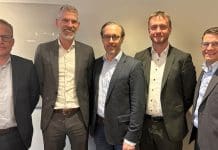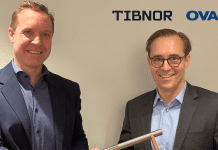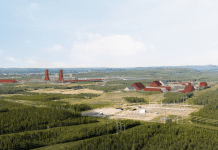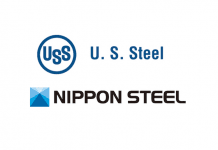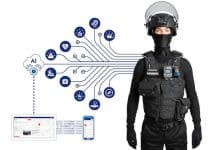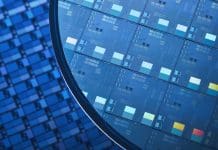SKF is finding ways to make remanufacturing even more cost effective and environmentally sustainable.
Remanufacturing is a fundamental pillar of the circular economy and it has since long been part of SKF’s offering to its industrial customers. When industrial bearings are removed from a machine during repairs or routine overhauls, they can be sent to a specialist SKF Services Centre to be disassembled, inspected, and restored to operational condition.
Compared with the production of a new bearing, remanufacturing uses less material, consumes less energy, and generates less carbon emissions. A remanufactured bearing reduces the carbon footprint compared to a new one by up to 90%.
Transforming remanufacturing
Like any other industrial process, remanufacturing has its own costs and environmental impact. Bearings must be shipped from the end user to a dedicated facility, and the operations used to restore the bearing require energy and materials. The choices about when, where, and how to remanufacture a bearing can have a significant effect on the economic and environmental benefits of the process.
Such choices can be tricky to get right. For example, waiting too long before sending a bearing for remanufacturing means excessive wear or damage, which might make the remanufacturing impractical. Acting too early generates unnecessary costs and emissions. Once a bearing reaches the SKF facility, the company’s remanufacturing engineers must choose the most cost-effective and energy-efficient remanufacturing steps to restore the performance of the bearing. Those critical decisions are usually made relying on the skill and judgement of end-user maintenance specialists, SKF’s application engineers and remanufacturing experts.
A major R&D program currently running at SKF aims to transform remanufacturing planning and execution bringing new insights into bearing performance, improved analytical rigour, and incorporating the power of artificial intelligence (AI) to the process.
Choosing efficiency
SKF REPaIR (Rotating Equipment Performance aided by Innovative Remanufacturing) is a multi-pronged R&D effort that looks at the complete remanufacturing value chain. Innovation begins at the customer plant, with an automated machine vision system that can evaluate bearing damage using digital photographs. The system uses AI, in the form of a deep neural network image recognition algorithm, which has been trained to detect and classify specific damages in bearings.
 Unlike older machine vision approaches, SKF’s AI vision system has been designed to operate in real-world conditions, where images may be obtained on the factory floor or in the field and tight control over lighting and composition are impossible. The system can identify the bearing surface even if the image is captured in suboptimal conditions.
Unlike older machine vision approaches, SKF’s AI vision system has been designed to operate in real-world conditions, where images may be obtained on the factory floor or in the field and tight control over lighting and composition are impossible. The system can identify the bearing surface even if the image is captured in suboptimal conditions.
SKF’s system is in the future expected to provide an initial “go/no-go” evaluation of a bearing which would indicate to the customer whether the component is suitable for remanufacturing or not. In the latter case, it is probably more cost-efficient to responsibly recycle the bearing locally. This new AI vision system is explained in detail in a recent EVOLUTION article “The future of bearing failure analysis is here”.
Once a bearing is selected for remanufacturing and transported to the nearest SKF Services Centre, it is disassembled and cleaned ready for detailed inspection. Here, the REPaIR team is developing a new opto-mechanical inspection device based on machine learning technology. The images generated by this device will be processed by an AI system, which has been trained to identify and classify common bearing defects. Ultimately, the highly consistent images generated by the device will allow the AI tool to generate a comprehensive report on the condition of the bearing, including recommendations on the most appropriate sequence of remanufacturing steps.
 Remanufacturing inspection could offer the opportunity to assess the health of the bearing material. But historically, the main way to confirm that the material is in good condition has been to look at the sub-surface structure through a microscope, a process that requires cutting the bearing.
Remanufacturing inspection could offer the opportunity to assess the health of the bearing material. But historically, the main way to confirm that the material is in good condition has been to look at the sub-surface structure through a microscope, a process that requires cutting the bearing.
The team is also exploring the use of novel non-destructive techniques to analyse the state of the material below the surface of the bearing. “The ultimate life of a bearing is determined by the fatigue life of the sub-surface material, but most bearings fail much earlier due to surface damage”, says Hannes Leopoldseder, Business Unit Manager Industrial Services Centre at SKF. “Remanufacturing restores that surface, so the user can benefit from the full potential life of the bearing.” Non-destructive methods could allow the true remaining useful life of a bearing to be quantified for the first time.
“Light-touch” remanufacturing
SKF strive to find the most efficient processes for their remanufacturing, the ones that favour a lean and light touch approach over multi-step routes that characterise ‘heavy’ remanufacturing. To this end, the REPaIR team is running an extensive test program to compare the operating life of damaged bearings at different reprocessing levels.
By testing dozens of bearings to failure on accelerated life-testing rigs, the team aims to unlock opportunities for new “light-touch” remanufacturing strategies. For example, one common form of damage is the result of hard contaminant particles entering a bearing during use. As these particles are trapped between the rolling elements and the raceway, they can be pushed into the surface, causing damage.
This type of damage usually appears as a pit or dent in the surface of the material, creating material displacement. “These situations are of particular interest to us because the traditional remanufacturing approach in this situation would focus on removing the entire pit in the bearing surface. Eliminating that may require the removal of a lot of material,” says Sebastien Blachere, R&D scientist at SKF. “Removing only the main stress raisers is much easier, and our early tests have shown that doing this could be all you need to do to restore the full bearing life in some situations.”
The life after remanufacturing
The test program will give the REPaIR team a much clearer picture on the effectiveness of the different remanufacturing strategies. Data generated by the program will also be used as input for new calculation models for bearings that have been remanufactured. “All the elements of the analysis program will help end-users, says Hannes Leopoldseder. “The first question many customers ask is ‘how long will a remanufactured bearing last in my application?’ With this programme, we want to give them a quantitative comparison between a new bearing and a remanufactured bearing, in order for them to make remanufacturing decisions with confidence.”
This new ability to provide to the customer a life estimation after remanufacturing comes from two sources. The first one is a better understanding of the actual operating conditions in the application, for instance offering a more accurate estimation of the level of contamination. The second one is the precise knowledge of the actual conditions (surface and sub-surface) of the bearing parts after remanufacturing. These two sources are then the input of a predictive model based on current SKF high expertise in bearing performance modelling (GBLM Generalized Bearing Life Model).
A bridge between R&D and business
The REPaIR program is then paving the way towards new remanufacturing offers fulfilling high-end customer expectation on planning and performance, together with environmental sustainability. Its ambitious objectives and its promising intermediate findings are the results of a close collaboration between SKF researchers and direct actors of the SKF remanufacturing business. This efficient way to anchor R&D programs into direct business targets is showing excellent results towards SKF costumers and high motivation within the various project teams.



